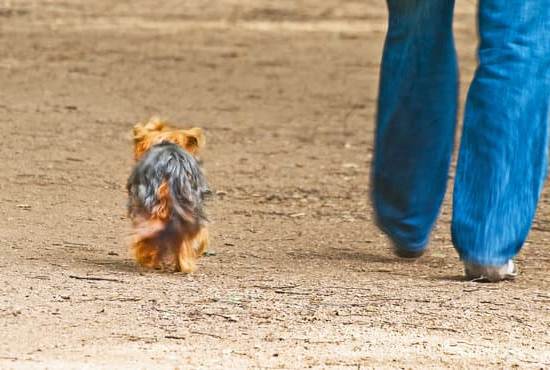Narcotics detection dogs play a crucial role in law enforcement and security, helping to detect illegal drugs and substances in various settings. In this article, we will explore the intricacies of training these specialized canines and the essential steps involved in preparing them for their important work.
The training of narcotics detection dogs involves a combination of obedience training, scent detection training, and advanced techniques to ensure they are able to accurately locate illicit substances. Additionally, selecting the right dog for this type of training is paramount to the success of the program.
Throughout this article, we will delve into the basics of narcotics detection dog training, from establishing a strong foundation through basic obedience training to handling and care for these skilled animals. We will also discuss the importance of maintaining skills and continuing education for narcotics detection dogs as part of their ongoing development in their crucial role in law enforcement operations.
Overview of Narcotics Detection Dog Training
Training narcotics detection dogs requires a unique set of skills and methods to ensure that they are able to effectively carry out their important role in law enforcement. The key to successful training of narcotics detection dogs lies in understanding the basics of their training process. This includes selecting the right dog for the job, establishing a strong foundation in basic obedience training, and then progressing to scent detection training.
One of the most critical aspects of narcotics detection dog training is selecting the right dog for the task. Not all dogs possess the necessary traits and characteristics to excel in this type of work. It is essential to choose a dog with a high play drive, strong work ethic, and exceptional sense of smell. These attributes will provide a solid foundation for their training as narcotics detection dogs.
Once the appropriate dog has been selected, it is crucial to establish a strong foundation through basic obedience training. This lays the groundwork for their future success in scent detection work. Basic commands such as sit, stay, come, and heel are essential for building a solid working relationship between handler and dog.
Additionally, implementing positive reinforcement techniques during this stage will help create a positive association with training and reinforce desired behaviors. Understanding these fundamental principles is crucial for anyone learning how to train narcotics detection dogs effectively.
Selecting the Right Dog for Narcotics Detection Training
When it comes to selecting the right dog for narcotics detection training, there are several important factors to consider. The breed of the dog, as well as its individual temperament and drive, play a crucial role in determining its suitability for this specialized training.
One of the most common breeds used for narcotics detection work is the Labrador Retriever due to their intelligence, trainability, and strong sense of smell. However, other breeds such as German Shepherds and Belgian Malinois are also often utilized for their high energy levels and keen sense of smell. It’s important to remember that while breed characteristics can be a good starting point, each dog should be evaluated based on their individual qualities rather than solely their breed.
In addition to breed considerations, factors such as age, health, and previous training experience should also be taken into account. Dogs selected for narcotics detection training should be in good physical condition and free from any health issues that could impede their ability to perform the tasks required of them. Previous training history is also important – while some prior obedience training can be beneficial, dogs with previous behavioral issues or aggression may not be suitable candidates for narcotics detection work.
Overall, selecting the right dog for narcotics detection training requires careful consideration of various factors to ensure that the chosen candidate has the necessary traits and capabilities to excel in this specialized field.
| Factor | Description |
|---|---|
| Breed | Consider breed characteristics such as intelligence, trainability, and sense of smell. |
| Age and Health | Ensure the dog is in good physical condition without any health issues. |
| Previous Training Experience | Evaluate any prior training history and consider any behavioral issues or aggression. |
Establishing a Strong Foundation
Importance of Basic Obedience Training
Basic obedience training serves as the foundation for the successful training of narcotics detection dogs. This type of training teaches dogs to follow basic commands such as sit, stay, come, and heel. These commands are essential for the effective handling of narcotics detection dogs in various environments and situations. Obedience training also helps to establish a strong bond between the handler and the dog, which is crucial for effective teamwork during detection operations.
Training Methods for Basic Obedience
When it comes to basic obedience training for narcotics detection dogs, positive reinforcement techniques are widely recommended. This involves rewarding the dog with treats, praise, or toys when they correctly perform a command.
Consistency and patience are key during this phase of training, as it may take time for the dog to fully understand and respond to each command. Handlers should also be firm but gentle in their approach to obedience training, ensuring that the dog respects them as a leader.
Combining Obedience With Scent Detection Training
As part of establishing a strong foundation for narcotics detection dogs, it is important to integrate obedience training with scent detection training. Dogs should be able to obey basic commands while focusing on searching for narcotics odors.
This can be done by incorporating scent detection exercises into obedience training sessions and gradually increasing the complexity of tasks as the dog progresses. By combining these two elements early on, handlers can effectively prepare their dogs for more advanced narcotics detection training in the future.
Overall, basic obedience training sets the stage for successful narcotics detection dog training by laying the groundwork for discipline, communication, and teamwork between handler and dog.
Introduction to Scent Detection Training for Narcotics
Narcotics detection dogs play a crucial role in law enforcement and security, as they are trained to sniff out illegal substances such as drugs and explosives. The training of these K9 officers is highly specialized and requires dedication, patience, and expertise. In this section, we will explore the essential aspects of scent detection training for narcotics detection dogs, providing an understanding of the key principles involved in this critical process.
Understanding Scent Detection Training
The foundation of narcotics detection dog training lies in the development of their natural ability to detect scents. A dog’s sense of smell is incredibly powerful, and when properly harnessed, it can be used to identify minute traces of narcotics that humans would never be able to detect. Scent detection training involves honing this extraordinary olfactory capability through a series of structured exercises and simulations.
The Process of Scent Detection Training
The training process begins by introducing the dog to the specific odor of narcotics in a controlled environment. This exposure allows the dog to become familiar with the scent and associate it with a positive outcome, such as receiving praise or a reward.
As the dog becomes more attuned to the target odor, training progresses to include searching for concealed narcotics in various scenarios, such as vehicles, buildings, or open spaces. Handlers employ systematic techniques to ensure that the dogs accurately indicate the presence of narcotics without being influenced by other distractions.
The Role of Handlers in Scent Detection Training
Handlers are integral to the success of scent detection training for narcotics detection dogs. They must understand how to effectively communicate with their canine partners and provide appropriate guidance during training sessions. Additionally, handlers play a vital role in maintaining consistency and accuracy in the dog’s responses to scent detection tasks. Proper communication, trust-building exercises, and regular practice are crucial components for both handlers and their canine counterparts when undergoing scent detection training for narcotics.
Advanced Training Techniques for Narcotics Detection Dogs
Once a narcotics detection dog has mastered the basics of scent detection and obedience training, it is time to move on to more advanced training techniques. These techniques are crucial in honing the dog’s skills and ensuring that they can effectively perform their duties in real-world situations. Advanced training for narcotics detection dogs involves refining their ability to detect various types of narcotics, increasing their accuracy, and improving their response to different environments and scenarios.
One advanced training technique for narcotics detection dogs is imprinting them with multiple scents. This means exposing them to a wide range of narcotics odors so that they can recognize and alert on different substances.
Imprinting with multiple scents helps the dog develop a more discriminating nose, making them less likely to be confused by similar odors or distracted by irrelevant scents. This also enables them to accurately detect a wider variety of narcotics, making them invaluable assets in law enforcement and security operations.
Another important aspect of advanced training for narcotics detection dogs is scenario-based training. This involves exposing the dogs to realistic scenarios that they may encounter in the field, such as searching vehicles, buildings, or large outdoor areas.
By simulating these scenarios during training, handlers can assess the dog’s ability to search effectively, locate hidden narcotics, and indicate their find accurately. Scenario-based training also helps the dogs adapt to different environments and work under various conditions, ensuring that they can perform their duties reliably in any situation.
In addition to imprinting with multiple scents and scenario-based training, ongoing education and exposure to new challenges are essential for maintaining the skills of narcotics detection dogs. Handlers should continuously engage their dogs in practical exercises where they are exposed to new environments, scents, and challenges.
This type of continued education keeps the dog’s skills sharp and ensures that they remain proficient in detecting narcotics throughout their career. Overall, advanced training techniques play a vital role in enhancing the capabilities of narcotics detection dogs and enabling them to detect illicit substances effectively in diverse settings.
Handling and Care for Narcotics Detection Dogs
Once a dog has completed the extensive training required to become a narcotics detection dog, it is crucial to provide proper handling and care to ensure that they are able to perform their duties effectively. Handling a narcotics detection dog involves more than just directing them to search areas for drugs; it also requires building a strong bond with the dog and understanding their behavior cues during searches.
It is important to remember that narcotics detection dogs are not just tools, but living beings that require care and attention. This includes providing them with regular exercise, proper nutrition, grooming, and veterinary care. Building a strong relationship with the dog through positive reinforcement and affection will help create trust between the handler and the dog, making them more effective as a team.
Proper handling of narcotics detection dogs also involves ensuring their safety during searches. Handlers must be mindful of the environmental conditions in which the dog is working, including factors such as temperature, terrain, and potential hazards.
It is also essential to recognize signs of stress or fatigue in the dog and take appropriate measures to ensure their well-being. Understanding how to train narcotics detection dogs not only involves teaching them how to detect substances but also incorporating care and handling techniques that prioritize their physical and emotional health.
Maintaining Skills and Continuing Education for Narcotics Detection Dogs
Once a narcotics detection dog has completed its initial training, it’s crucial to continually maintain and improve their skills through ongoing education and practice. By implementing the right strategies, handlers can ensure that their canine partners remain effective in detecting narcotics and maintaining their sharp senses.
To maintain skills and continuing education for narcotics detection dogs, consider the following tips:
1. Regular Training Sessions: Schedule regular training sessions to keep the dog’s skills sharp. These sessions should focus on reinforcing obedience commands and scent detection skills.
2. Expose Them to Different Scenarios: Rotate training environments to expose the dog to various scenarios and new challenges. This will help them adapt to different settings and continue honing their detection abilities.
3. Continuing Education Workshops: Attend workshops, seminars, or conferences focused on narcotics detection training to stay updated on the latest techniques and best practices in this field.
Through these efforts, handlers can ensure that their narcotics detection dogs remain adept at detecting drugs while also providing continued mental stimulation and physical exercise for the animals.
Conclusion
In conclusion, the proper training of narcotics detection dogs is crucial in ensuring the success and effectiveness of their work. As highlighted throughout this article, understanding the role of these specially trained dogs, selecting the right candidates for training, establishing a strong foundation in basic obedience, and implementing advanced scent detection techniques are all essential components in the training process.
Additionally, providing proper handling and care, as well as continuing education to maintain and enhance their skills, are vital for the continued success of narcotics detection dogs in their important role in law enforcement and security.
It is clear from the information presented that training a narcotics detection dog requires dedication, expertise, and a comprehensive understanding of dog behavior and scent detection. Through ongoing education and collaboration with experienced trainers and handlers, law enforcement agencies can continue to improve their methodologies for training these valuable canine partners.
By staying updated on best practices and advancements in training techniques, organizations can ensure that narcotics detection dogs remain a critical asset in detecting illegal substances and supporting efforts to combat drug trafficking.
In summary, proper training for narcotics detection dogs not only benefits law enforcement agencies but also contributes to public safety by helping to intercept illegal drugs before they reach communities. It is essential to recognize the importance of investing in the comprehensive training of these remarkable animals as part of overall efforts to address drug-related crime effectively.
By following the outlined guidelines on how to train narcotics detection dogs and maintaining a commitment to ongoing education and care, it is possible to optimize the impact of these canine officers’ work in preserving safety and security.
Frequently Asked Questions
Can My Dog Be Trained as a Sniffer Dog?
Yes, dogs can be trained as sniffer dogs. They have a strong sense of smell and are often used by law enforcement to detect drugs, explosives, and other contraband. Training involves teaching the dog to recognize specific scents and alert their handler when they are detected.
What Dog Breed Is Used to Detect Narcotics?
The most common dog breed used to detect narcotics is the German Shepherd. These dogs are known for their intelligence, agility, and strong work ethic, making them highly effective in law enforcement roles. Other breeds that are often used for this purpose include Belgian Malinois, Labrador Retrievers, and Beagles.
What Drugs Can Dogs Not Smell?
Dogs have an incredibly sensitive sense of smell and can detect a wide range of drugs including marijuana, cocaine, heroin, methamphetamine, and ecstasy. However, there are certain synthetic drugs that may be more challenging for dogs to detect accurately, such as fentanyl analogs.
Additionally, some drugs that have been heavily processed or diluted may be more difficult for dogs to detect reliably.

Welcome to the blog! I am a professional dog trainer and have been working with dogs for many years. In this blog, I will be discussing various topics related to dog training, including tips, tricks, and advice. I hope you find this information helpful and informative. Thanks for reading!





